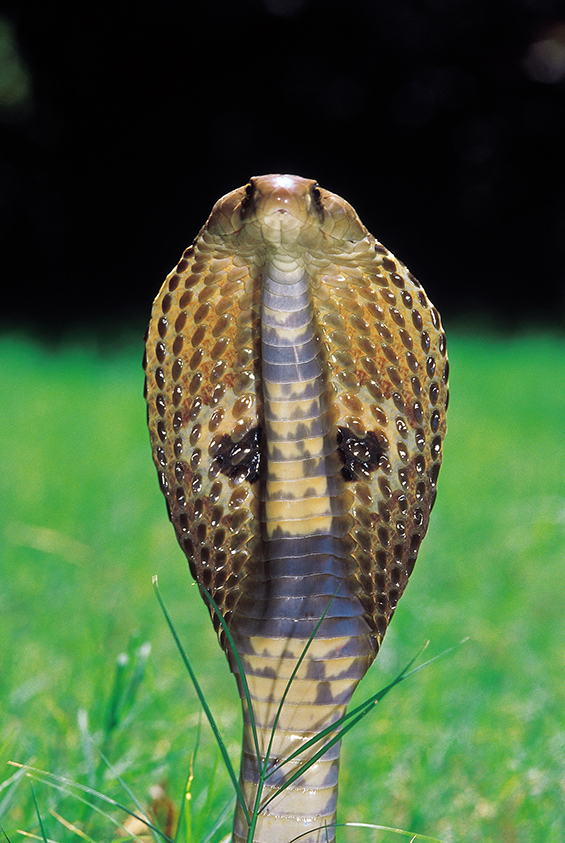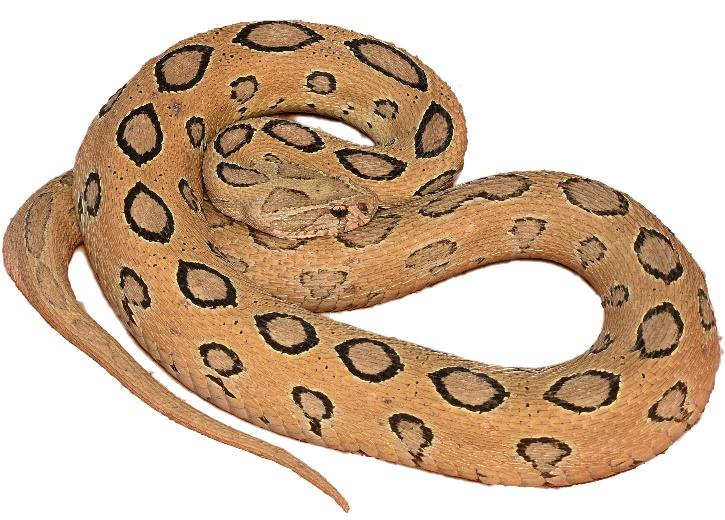– Debraj Manna
Snakebite kills around 58,000 Indians annually, and a majority of snakebites that lead to death or disability are attributed to the ‘big four’ of Indian snakes – the Russell’s viper (Daboia russelii), one of the deadliest snake species in the world, the spectacled cobra (Naja naja), the common krait (Bungarus caeruleus) and the saw-scaled viper (Echis carinatus). Commercial antivenom treatment for snakebite does not always prove effective, and despite the severity of the problem in India, few efforts have been made to understand why this is so.
In a recent study published in PLoS Neglected Tropical Diseases, researchers at IISc’s Centre for Ecological Sciences (CES) and collaborators have demonstrated that the venom of Russell’s vipers shows dramatic differences in composition and toxicity based on geographical location. They also found that the commercial antivenom treatment for Russell’s viper venom works as marketed for most populations of this snake, except the North Indian populations. This in contrast to a previous study on cobras, which showed similar variation in venom based on location, but the commercial antivenom treatment was not effective against most populations.

An Indian spectacled cobra (Naja naja) from the Pune district of Maharashtra with its charismatic inflated hood (Credit: Ashok Captain and Indian Herpetological Society)
Antivenoms are cocktails of antibodies that bind to the toxins in the venom and neutralise them. Kartik Sunagar, Assistant Professor at CES and the corresponding author of this study, points out that even when this binding is seen in lab-based experiments, it is not sufficient to predict whether this will happen inside the human body. Commercial antivenoms are often deployed in the market without preclinical assessments, which are typically done using animals, or clinical studies, which involve testing on humans. To understand the actual efficacy of antivenom against Russell’s viper venom, the researchers collected venom from 48 individual vipers in five biogeographical regions of India, as well as tested how well the antivenom neutralised the different types of venoms in mice.
Snake venom is known to be an adaptive trait that can vary depending on the environment. To demonstrate this in Russell’s vipers, the researchers used analytical techniques such as SDS-PAGE and reversed-phase HPLC, which reveal variations in composition and abundance of venom components. Mass spectrometry helped to identify the constituents of the venoms.

Russell’s viper (Daboia russelii) snake from Odisha with its characteristic strike pose (Credit: Vivek Sharma)
To examine the impact of current antivenom therapy on these variations, the team used assays in the lab to help identify the binding of the antivenom to the venom proteins outside the body, and also performed experiments to check whether the antivenom could neutralise the toxic effects of venom injected into mice. Surprisingly, despite the variations in venom composition, commercially available antivenom worked as marketed for most populations of this snake, except for those from the semi-arid region of Northern India. However, these experiments do not indicate whether the antivenom also offers protection against life-long injuries that accompany Russell’s viper bites.
With the viper and cobra studies, says Sunagar, “We show that you cannot really predict the clinical or preclinical outcomes just by observing venom variation across populations. Instead, clinical and preclinical studies are the only methods to accurately test the effectiveness of commercial antivenoms.” He says that alarmingly, the results of these studies along with an older study on the venom profiling of the ‘big four’ by the same team (which includes Romulus Whitaker, Gerard Martin, and Nicholas Casewell), show the preclinical ineffectiveness of commercial antivenoms in neutralising the venoms of the North Indian populations of three of the ‘big four’ snakes.
In order to ensure that antivenoms are more effective against variants of snake venom, the researchers highlight the urgent need for immediate production of region-specific antivenoms for deadly snakes in snakebite hotspots of the country. As a long-term strategy, with the availability of enough information regarding all venom types, they suggest developing an antivenom effective across India that would be evaluated by clinical trials. Sunagar also stresses the importance of developing recombinant antivenoms (which can be produced in cells on culture plates instead of the current method of using horse antibodies) for increased efficacy, specificity, and safety – an area that his lab is working on as well.
RR Senji Laxme, Suyog Khochare, Saurabh Attarde, Vivek Suranse, Ashwin Iyer, Nicholas R Casewell, Romulus Whitaker, Gerard Martin and Kartik Sunagar, Biogeographic venom variation in Russell’s viper (Daboia russelii) and the preclinical inefficacy of antivenom therapy in snakebite hotspots, PLoS Neglected Tropical Diseases (2021).
https://journals.plos.org/plosntds/article?id=10.1371/journal.pntd.0009247
RR Senji Laxme, Saurabh Attarde, Suyog Khochare, Vivek Suranse, Gerard Martin, Nicholas R Casewell, Romulus Whitaker, Kartik Sunagar, Biogeographical venom variation in the Indian spectacled cobra (Naja naja) underscores the pressing need for pan-India efficacious snakebite therapy, PLoS Neglected Tropical Diseases (2021).
https://journals.plos.org/plosntds/article?id=10.1371/journal.pntd.0009150
CONTACT:
Kartik Sunagar
Assistant Professor
Centre for Ecological Sciences
Indian Institute of Science (IISc)
+91-80-2293-2635
ksunagar@iisc.ac.in
NOTE TO JOURNALISTS:
a) If any of the text in this release is reproduced verbatim, please credit the IISc press release.
b) For any queries about IISc press releases, please write to news@iisc.ac.in or pro@iisc.ac.in




